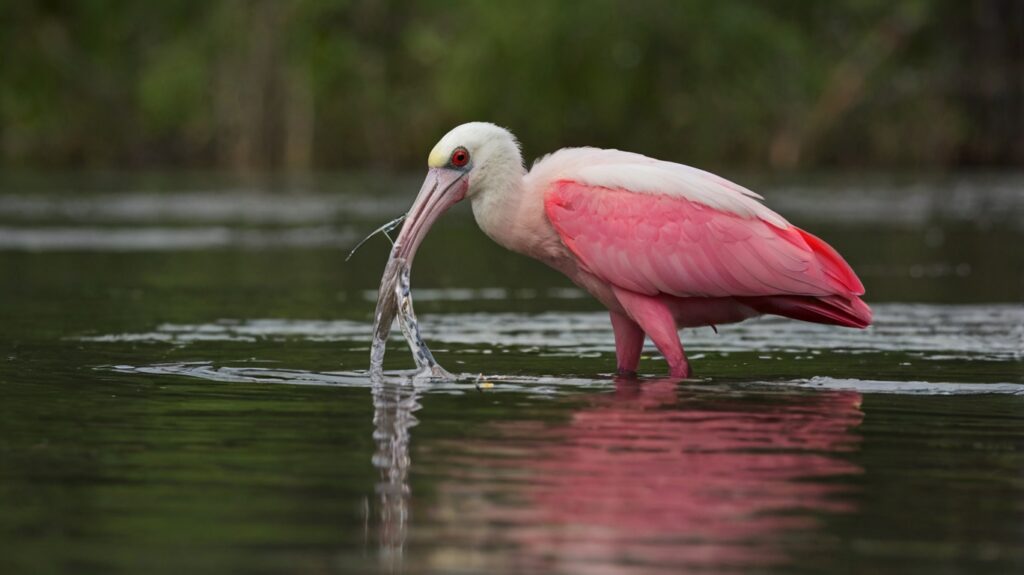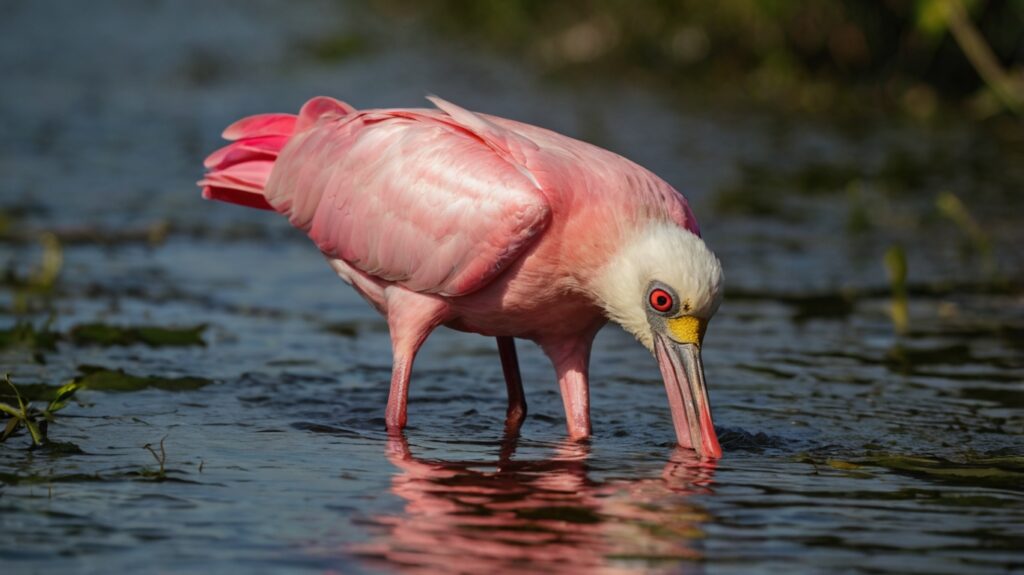Table of Contents
- Introduction
- Physical Characteristics
- Habitat and Distribution
- Diet and Feeding Behavior
- Breeding and Reproduction
- Conservation Status
- Conclusion
- FAQs
Introduction
The Roseate Spoonbill (Platalea ajaja) is a striking wading bird known for its vibrant pink plumage and unique spoon-shaped bill. Often mistaken for flamingos due to their color, these birds are a fascinating species found in wetlands across the Americas. This guide explores their physical traits, habitat, feeding habits, breeding patterns, and conservation efforts.

Physical Characteristics
The Roseate Spoonbill stands out with:
- Pink and White Plumage: Adults display bright pink wings, tail, and shoulders, while their neck and underparts are often white.
- Distinctive Bill: A flat, spoon-shaped bill helps them sift through water for food.
- Size: They measure about 28–34 inches (71–86 cm) in length, with a wingspan of 47–52 inches (120–130 cm).
- Legs and Eyes: Long reddish legs and red eyes add to their striking appearance.
Juveniles have paler feathers, gaining their iconic pink hue as they mature due to their crustacean-rich diet.
Habitat and Distribution
Roseate Spoonbills thrive in:
- Coastal Wetlands: Mangroves, marshes, and estuaries in the southeastern U.S., the Caribbean, and South America.
- Freshwater Habitats: Swamps, lagoons, and flooded areas with shallow water.
- Geographic Range: Found from the Gulf Coast of the U.S. (Texas to Florida) down to Argentina.
Diet and Feeding Behavior
These birds are opportunistic feeders, using their specialized bills to:
- Sweep Sideways: They swing their bills in shallow water to catch prey.
- Primary Diet: Small fish, crustaceans (like shrimp), aquatic insects, and plant matter.
- Group Foraging: Often seen feeding in small groups, especially during low tide.
Breeding and Reproduction
Roseate Spoonbills exhibit fascinating breeding behaviors:
- Nesting Sites: They build nests in trees or shrubs, often in colonies with other wading birds.
- Eggs and Incubation: Females lay 2–4 eggs, incubated by both parents for about 22–24 days.
- Chick Development: Chicks fledge in 5–6 weeks but stay with parents for several more weeks.
Conservation Status
Currently listed as Least Concern by the IUCN, but they face threats such as:
- Habitat Loss: Wetland drainage and coastal development.
- Pollution: Pesticides and water contamination affecting food sources.
- Conservation Efforts: Protected areas and wetland restoration help sustain populations.
Conclusion
The Roseate Spoonbill is a captivating bird with its vivid colors and unique feeding adaptations. Protecting their wetland habitats ensures these beautiful birds continue to thrive in the wild.

FAQs
1. Why is the Roseate Spoonbill pink?
Their pink coloration comes from carotenoid pigments in their diet, primarily from crustaceans like shrimp.
2. Where can I see Roseate Spoonbills in the U.S.?
They are commonly spotted in Florida, Texas, and Louisiana, particularly in wildlife refuges like Everglades National Park.
3. Are Roseate Spoonbills endangered?
No, they are classified as Least Concern, but habitat loss remains a threat.
4. How do Roseate Spoonbills feed?
They sweep their spoon-shaped bills side-to-side in shallow water to catch small aquatic prey.
5. Do Roseate Spoonbills migrate?
Some populations in the northern range may migrate short distances, but many are year-round residents in warmer regions.
